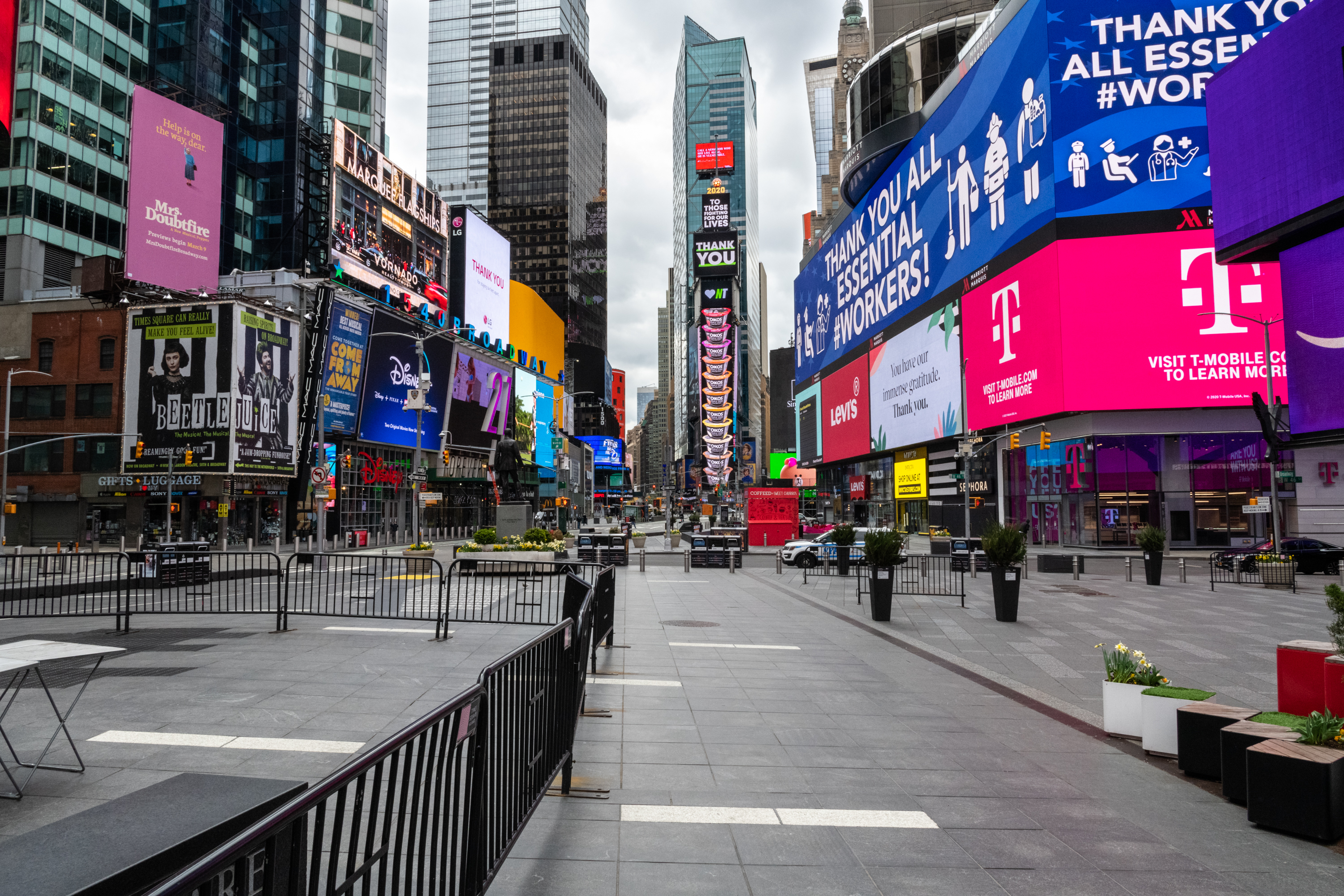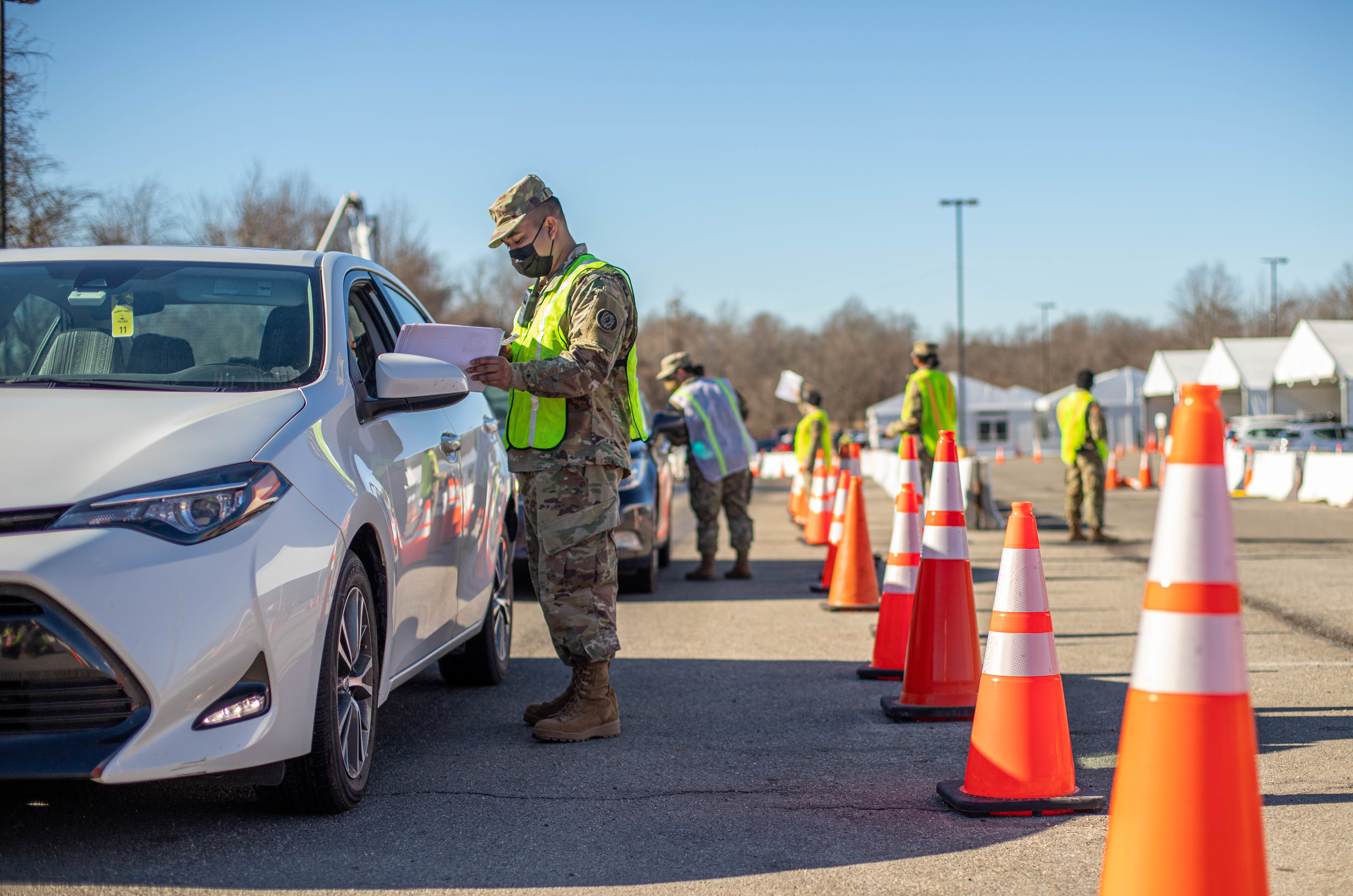| |
 |
| |
A mostly empty Times Square in downtown Manhattan as tourists and New Yorkers stayed home in the first weeks of the pandemic to reduce the number of infections, April 10, 2020. (FEMA Photo). |
Five years ago, the nation faced one of its toughest public health challenges in decades, and the U.S. Army Corps of Engineers helped lead a national response with both flexibility and resilience. COVID-19 first appeared in late 2019 in East Asia and quickly spread around the world. On March 11, 2020, the World Health Organization declared the outbreak a global pandemic. Two days later, President Donald Trump declared a national emergency. In the weeks that followed schools and businesses closed, and millions of Americans began working from home. Less than a year later, in January 2021, the United States had counted 24 million cases of COVID-19 and over 400,000 deaths attributed to it.
Between early March and July 2020, USACE scrambled to adjust as new information became available about the extent and severity of the virus. The first priority was protecting its active duty and civilian workforce. Critical work continued through the practice of social distancing, use of face coverings and the increased use of telework. Many people remember the fear and uncertainty of those first weeks in eerily quiet cities and towns around the country: How long would isolation continue? Would friends and family get really sick and end up in the hospital? Would there be a bed for my family member if they needed it?
USACE undertook a nationwide program to construct alternate care facilities to address these concerns about potential shortages of hospital beds and to bolster public confidence that the nation could handle the anticipated peak number of cases that spring. As hundreds of thousands of Americans became ill with the virus, USACE worked with local partners to rapidly convert 38 existing buildings (such as hotels and convention centers) in cities across the country into alternate care facilities with the capacity of more than 15,000 beds. Using standard designs developed by the Corps, states also built 36 of their own facilities, with a capacity of more than 12,000 beds. In the early chaotic weeks, USACE’s work quickly became a tangible and reassuring symbol of the federal government’s determination to save lives. For example, Detroit District transformed the exhibit halls of a downtown convention center into a 1,000-bed field hospital in 10 days.
 |
|
| Detroit District Commander Lt. Col. Gregory Turner points to two inspirational signs above the recently completed patient areas in the Alternate Care Facility at the TCF Center in downtown Detroit, April 9, 2020. It took ten days to transform two exhibit halls in the 350,000-square-foot convention center into a 1000-bed field hospital. The copper pipe running across the ceiling was installed by the Corps to deliver oxygen to 600 patient bed spaces. (USACE Photo). |
|
During later waves of the pandemic, USACE worked with federal partners on more efficient means to augment the healthcare system to treat more patients, such as modifying existing hospital facilities to increase their capacity. Modifications included converting existing space into rooms for patients without COVID (thereby freeing up beds in intensive care units), adding capacity to oxygen delivery systems for COVID patients, and creating larger negative pressure areas to prevent infections from spreading.
As it did to most organizations, government and nongovernment, the pandemic led to a dramatic transformation of the USACE’ work environment. Prior to March 2020, only about 15 percent of USACE employees teleworked on any given day. Practically overnight, most of the USACE’ workforce of 37,000 had to work from home. To allow telework to happen at that scale, USACE information technology staff increased the number of VPN (virtual private network) connections from 6,000 to 40,000 in less than a month, working through supply chain challenges to secure the necessary equipment. Because of the flexibility of the workforce and the dedication of employees whose role required them to be onsite, USACE experienced very limited disruptions to its operations, even during the height of the pandemic.
Another highlight of America’s response to the pandemic was the incredibly rapid development of vaccines. Here, too, USACE supported the effort, providing technical advice on the safety and suitability of temporary buildings for use in the scientific trial and pharmaceutical manufacturing processes of vaccines. In spring 2021, USACE stepped up to help with public vaccination efforts, designing and assessing power generation systems and safety procedures at sites that could accommodate large numbers of people. By May 2023, more than 270 million people in the United States had been vaccinated at least once, representing the largest adult vaccination effort in U.S. history.
During the COVID-19 crisis, USACE distinguished itself by meeting the needs of the national emergency. At the onset of the pandemic, USACE helped reassure the public that beds would be available if they needed medical care. Later, USACE applied its planning expertise to help overcome the challenges of vaccine development and delivery. Most importantly, USACE and its workforce rapidly adapted to meet the challenges of the national emergency, showing the resilience to work through a once-in-a-generation crisis.
 |
|
 |
| An Operation Warp Speed sign in front of the patient entrance to a vaccine trial facility at Joint Base San Antonio-Lackland, Texas, November 10, 2020. USACE supported the historically rapid development of vaccines for COVID-19 by expanding testing facility spaces like these and making sure they met safety requirements. (U.S. Air Force photo). |
|
A Maryland National Guard Soldier speaks to a visitor to the Six Flags America Mass Vaccination Site in Bowie, Maryland, February 24, 2021. USACE helped design and assess mass vaccination sites across the country. (U.S. Army National Guard photo). |
| |
|
|
***
March 2025. No. 169.